Mystery Foto #44B Solved: A 1942 Photo of the Little Neck Parkway Motor Parkway Bridge
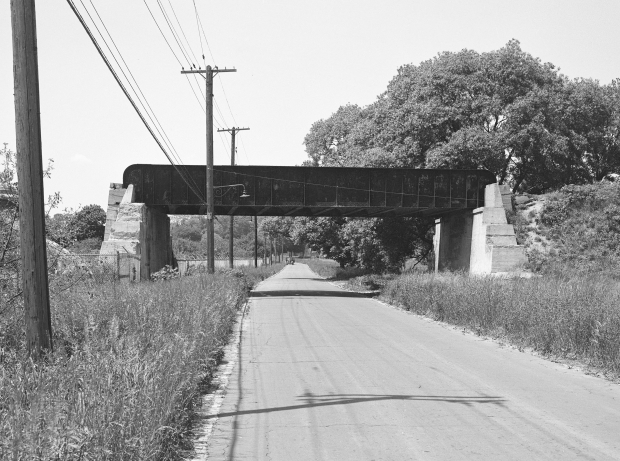
Did you solve this weekend's Mystery Friday Foto?
Answers to the Mystery Foto questions:
Identify the following:
- The location, the bridge and orientation of the photographer
The Little Neck Parkway Motor Parkway Bridge in Little Neck. The photographer was looking north.
- Why was this bridge different from the majority of Motor Parkway bridges?
As required by Queens County, this bridge was built as a railroad trestle type bridge in 1912.
- The year of the Mystery Foto. Provide a rationale.
June 5, 1942. Rationale: The partial demolition of bridge post-1938.
Comments (9)
Congrats to Robert Greenhaus, Frank Femenias, Greg O., Brian McCarthy and Dick Gorman for identifying the Little Neck bridge.
Kudos to Robert Greenhaus, Greg O. Steve Lucas, Brian McCarthy and Dick Gorman for recognizing the railroad trestle construction.
Enjoy,
Howard Kroplick
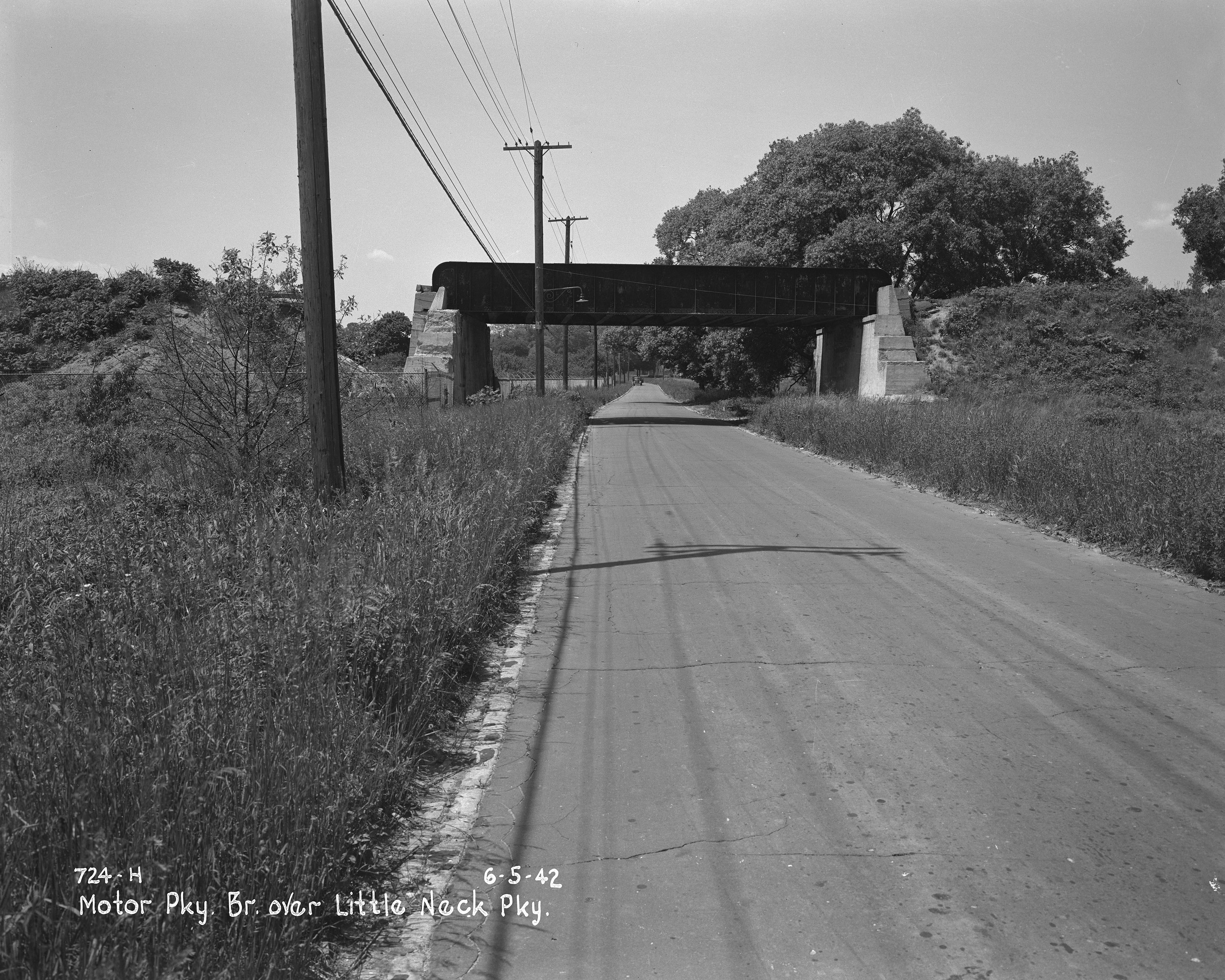
Caption: 6-5-42
Motor Pky. Br. over Little Neck Parkway
1932 Photo
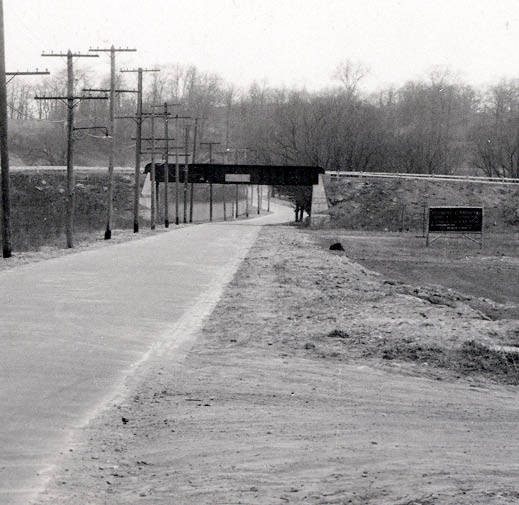
Unfortunately, the billboard is not readable.
July 30, 1942
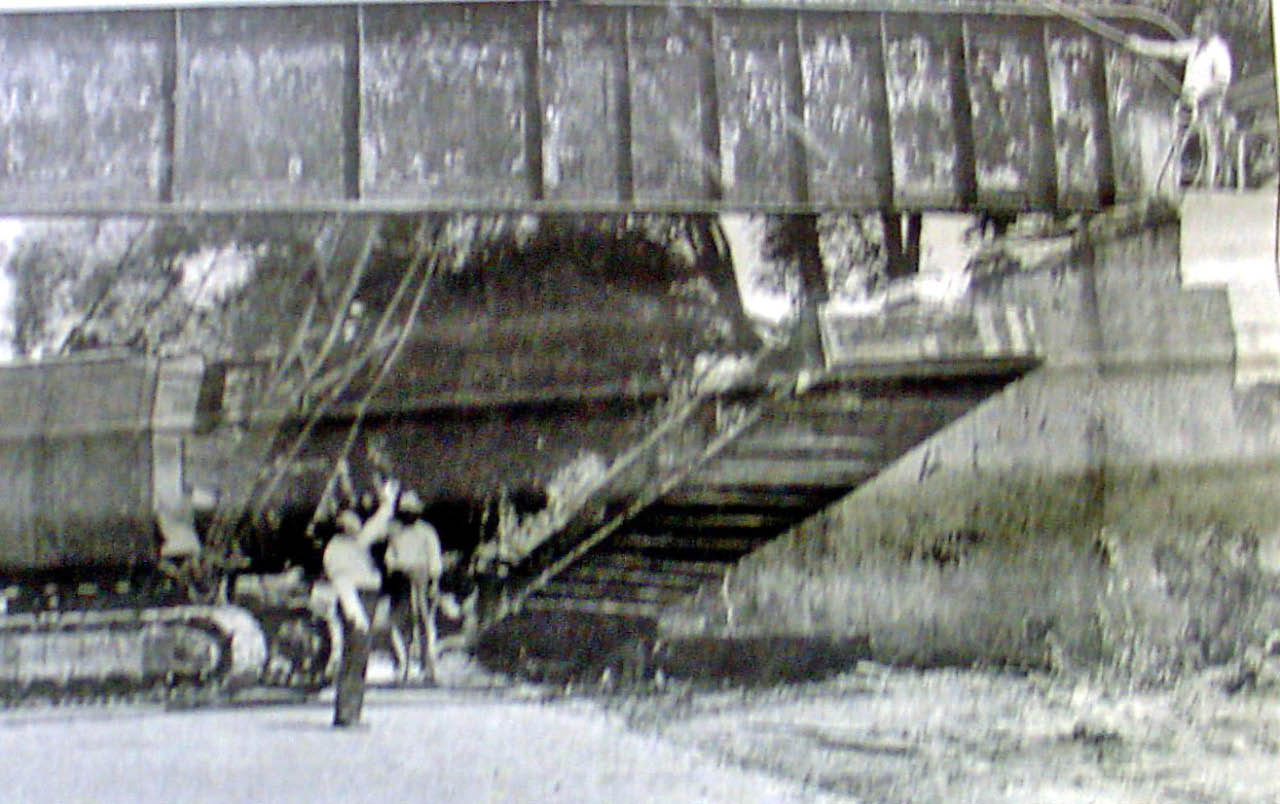
This photo was taken less than two months after the Mystery Foto was taken. Queens Borough President James Burke can be seen here directing the salvaging of a 14-ton steel girder from the bridge
2011

A 2011 view matching the Mystery Foto.

Motor Parkway remnants found near the site of the west embankment of the bridge.
Close-Ups
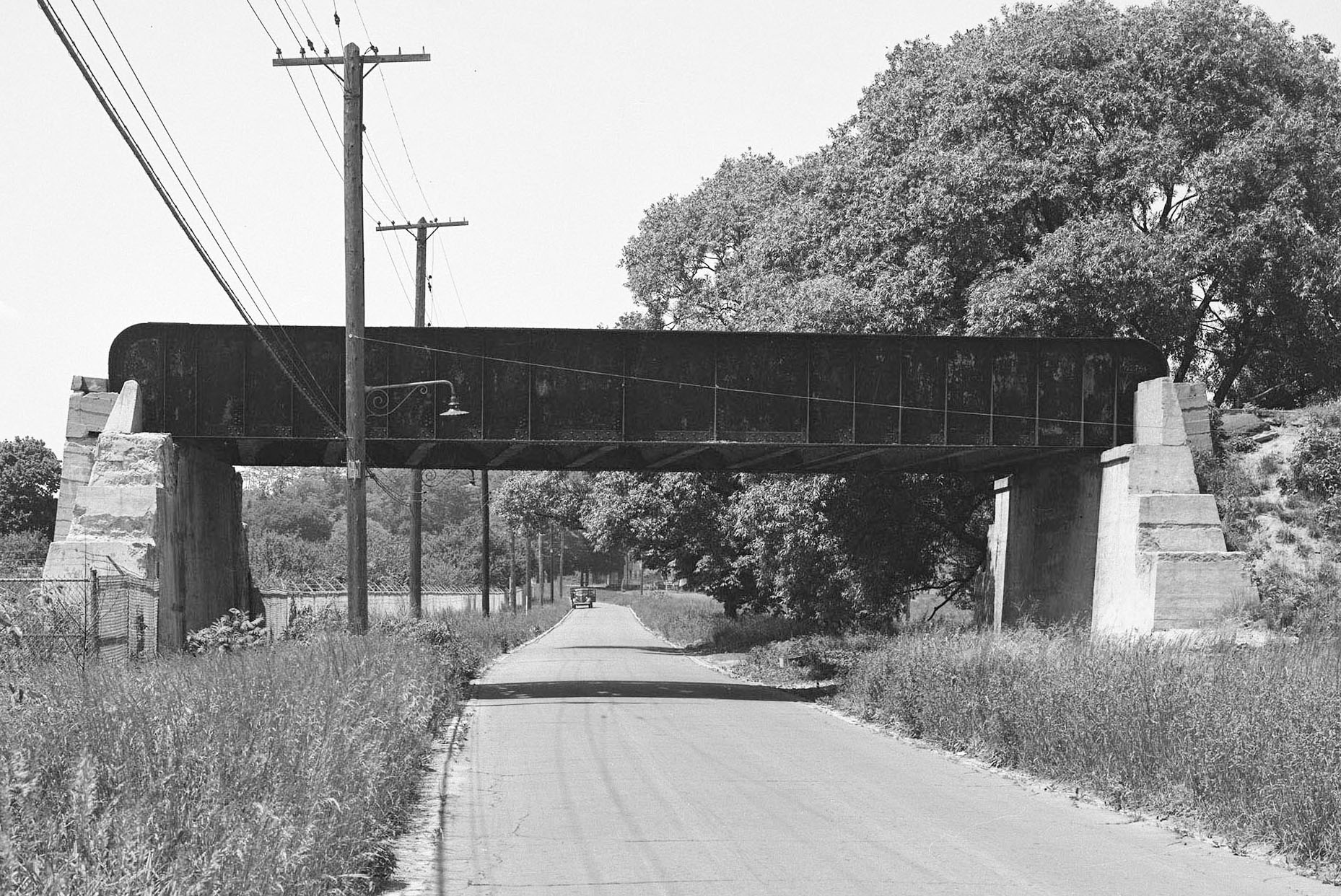
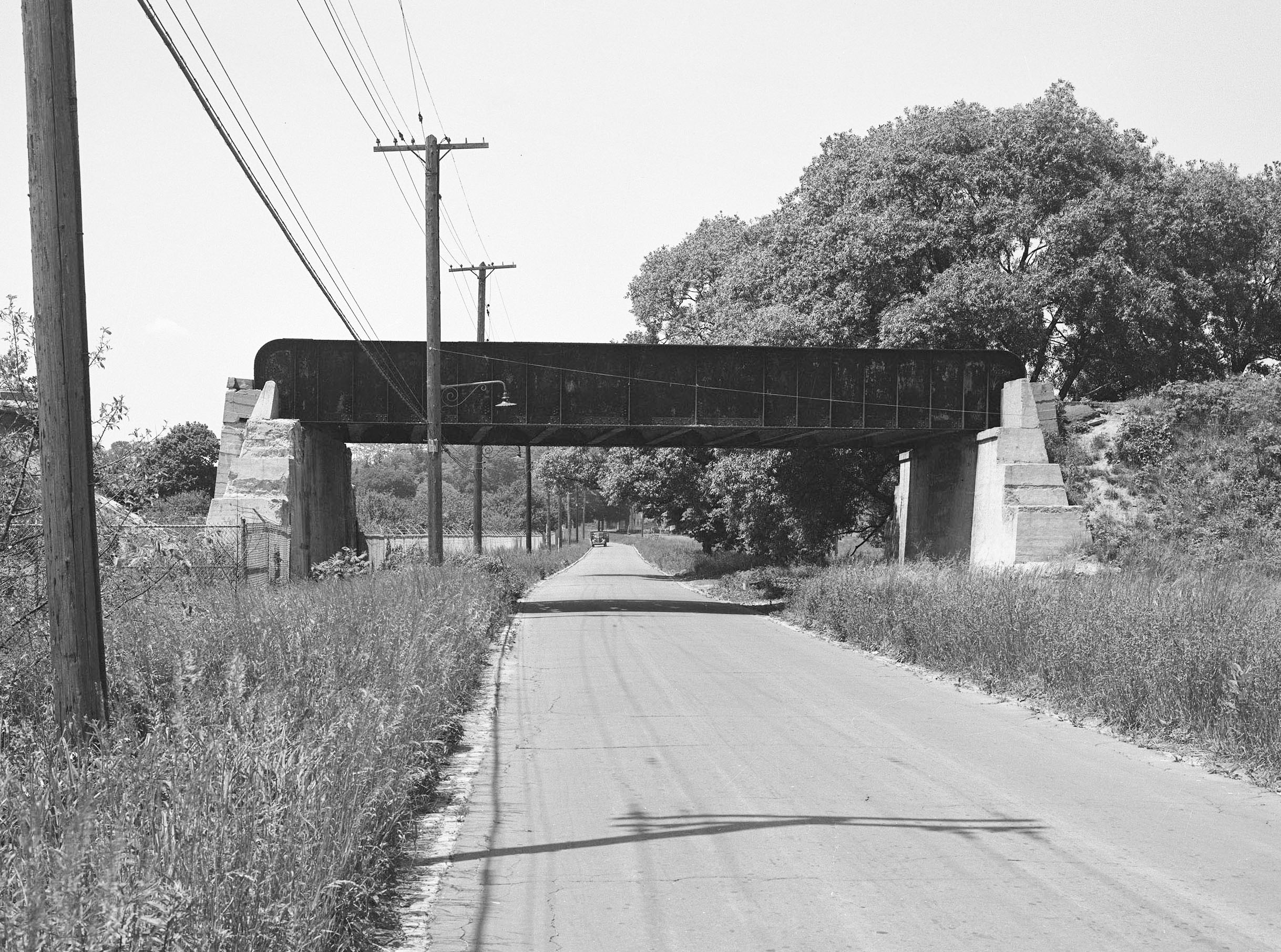

Comments
• Motor Parkway Bridge over Little Neck Road (Parkway). The photographer is looking North.
• This bridge and other bridges in Queens look different because when they were built the City of New York required the Motor Parkway to use railroad-type trestle construction over the Queens public roads.
• The photo was taken June 5, 1942 as part of a survey in preparation for the demolition of the bridge.
Motor Parkway’s Little Neck Parkway Bridge (1912-1942) looking NNW in the afternoon.
The open field beyond the bridge on the left is today’s Green Meadows Farm, and beyond that in the heavy trees is today’s Queens County Farm Museum. This rail road type girder bridge replaced an original Motor Parkway concrete bridge, similar to the Winchester Blvd bridge here—> https://www.vanderbiltcupraces.com/blog/article/wednesday_december_31_2008_the_bridges_over_winchester_boulevard.
I’ve yet to find photos of the original LIMP concrete bridge’s that spanned throughout Queens. Likely this mystery photo taken shortly before demolition in 1942.
-The location, the bridge and orientation of the photographer
Looking North at the Little Neck Parkway bridge
-Why was this bridge different from the majority of Motor Parkway bridges?
Constructed from steel as required by Queens in 1912.
-The year of the Mystery Foto. Provide a rationale.
June 5th, 1942. Just weeks before the July 30, 1942 Demolition.
I think we’re looking west with the LIMP going over Marcus Avenue in the Lake Success area. The shadow of the sun seems to indicate a north-south direction of the LIMP. The style of bridge followed the railroad trestle convention the was mandated through most of nearby Queens County. Since the south embankment has been mostly removed, I’m guessing the date to be during the construction of nearby Glen Oaks Village; maybe around 1948.
The steps on either side of the bridge look like the ones that are still at Springfield Boulevard, so I’m guessing that that’s where this photo was taken.
Queens, the first Winchester Avenue Bridge looking west.
Railroad type bridges were required by NYC when the bridge was build in 1912.
Since the roadway appears to have been removed, mid-1930s before the bridge was demolished.
I stumbled upon the answer for this Foto while comparing the bridges over Little Neck Pkwy & Commonwealth Blvd. Locations are similar with some differences. This is the pkwy bridge over Little Neck Pkwy in Queens, viewing north. Like a few of these past bridges in Queens, this one was built with railroad specifications. The differences are marked in the below images.
Doesn’t ring any bells but, just for starters, it seems to have RR bridge girders and spans a trolley RoW, if that helps anyone. Sam, III
Mystery Foto #44B… This is the Long Island Motor Parkway bridge over Little Neck Parkway in Queens. This view is looking north from Union Turnpike. The bridge was different than the majority of MP bridges because when it was built in 1912, New York City required that the Parkway authorities use railroad-type trestle construction over any Queens public roads. This photo is post 1938.
Similar to the Commonwealth bridge, the high voltage electrical lines are running just ~20 feet above the Motor Parkway bridge! How did they get away with that? The low voltage telephone line is running underneath the bridge. Maybe stricter safety measures were just beginning to take hold in NYC.
Prior to the approval by Queens County for the construction of the Little Neck Road and other bridges in Queens, the President of the Borough, Lawrence Gresser, requested an “immediate investigation and report” from the Engineer in Charge, Robert R. Crowell. Here is the request and Mr. Crowell’s findings. Interesting read!
Click here to Download this file
Click here to Download this file
Neat, Art; thanks! All the above comments are of interest but none address mine that provision seems to have been made for a trolley line. Could the excess width be solely due to Crowell’s requirement for “materially increased” expansion room? Sam, III
Just realized the slight left bend on Little Neck Pkwy is still there today, and the precise location where Queens County Farm Museum is located.
Art, Re., the photo showing a completed section of the Parkway. Note the lack on any expansion joints. Even a 4 foot wide sidewalk has expansion joints and only 5-6 feet apart. Here his a 22 foot wide expanse of concrete with none. On the entire 8 plus miles of concrete there wasn’t a single expansion joint. How come ? In those days the joints, for the most part, were a narrow metal contraption with a felt like material centrally located. These were cemented in place. The story I was told was that the joints wouldn’t stand up to the pounding of the race cars, loosen up and become a danger to the racers. Not only that, the joints would be a concern on high speed curves and slow up the cars. That year one of the goals of the race organizers was to establish new speed records, ( which they did ). The Parkway contractors thought they could solve the problem of concrete expanding and contracting by adding the wire mesh in the concrete mix. It didn’t work, Sections of concrete started heaving almost immediately, For the 1909 and 1910 races, repairs were made where necessary. In 1911 expansion joints were finally put in place.
_____________________________________________________
Howard Kroplick
Al, great info!
Al, I asked this once before in an earlier blog without an answer. How did they cut the paving in 1911 to install expansion joints? Mauls and chisels? No rotary diamond saws back then. Sam, III
Sam, I never bothered to check out the details of installing expansion joints after the fact. Don’t think it was too hard to do, concrete then was not the concrete of today. More difficult I think, is how did they cut slabs of marble and granite 500 years ago.
For stone, they used “LOTSA”. Lotsa star drills, lotsa sharpening, lotsa wedges, and lotsa hand hammering. In cold climates, they could pour water in the holes and let expansion do the cracking for them. But someone somewhere must have an old Sci. Amer. or ASCE Proceedings or such that explains how to cut concrete paving. Sam, III
Great details Sam and Al!!
Both the 1932 and 1942 photos show a clean peaceful country view.